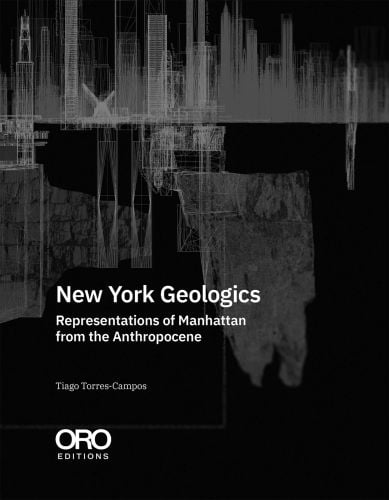
New York Geologics
Representations of Manhattan from the Anthropocene
- One of the book’s strongest pedagogical tools is the explanation of the methodologies employed to explore unconventional representations of Manhattan that seek a closer articulation between city and geology
- The explanations – both through image and text – focus on the iterative nature of design processes, meaning that they focus on the processes that eventually lead to their production rather than any specific outcome
- The book is likely to have both a professional and institutional readership. Professionals in the fields of architecture, landscape architecture and urban design may find the book relevant to explore alternative ways of representing contemporary city territories, as well as the methodologies that led to the production of certain images and the contexts in which they were produced
- In providing a critical reflection on the histories that make the city, the book may also appeal to scholars and students in Culture and Media Studies, especially devoted to the study of the urban condition
Manhattan is commonly regarded as an iconic island-territory of the 20th century. Conventional representations reinforce its reading as an urban condition resulting from neoliberal capitalism. These forces have expanded the city grid and extruded its architectures as a laboratory of urban ideas. Yet, like many other coastal and insular conditions, 21st-century Manhattan faces adverse Anthropogenic climate change. Stronger storm surges and sea level rise now demand that the island re-calibrates its social and environmental positions. The city needs to consider once again its fluid archipelagic conditions inherited from glacial dynamics.
With a focus on iconic city representations, the book examines distinct logics that try to make capitalist progress compatible with its territorial conditions. Even though these logics of land, water and ground – here called geologics – are perhaps less dominant than the dense urban culture and, therefore, less predominant in the representation of the city, they are still important to explain why Manhattan evolved to its current condition. The book explores these geologics through relationships between three 19th-century plans of Manhattan and three late-20th-century architectural manifestos – Delirious New York (Rem Koolhaas), The Manhattan Transcripts (Bernard Tschumi), and Lower Manhattan (Lebbeus Woods).
Plans and manifestos are explored creatively through design experimentation that retrospectively re-positions these representations from the perspectives offered by the Anthropocene. With an intricate connection between image, text, and installation, the book is an open invitation to radically interconnected imagination.
- Publisher
- ORO Editions
- ISBN
- 9781961856394
- Publish date
- 9th Feb 2026
- Binding
- Paperback / softback
- Territory
- World excluding USA, Canada, Australasia & Asia (except Japan; China non-exclusive)
- Size
- 229 mm x 178 mm
- Pages
- 240 Pages
- Illustrations
- 250 color
Distributed by ACC Art Books
Our Catalogues
Please log-in or create an account to see your recent items.